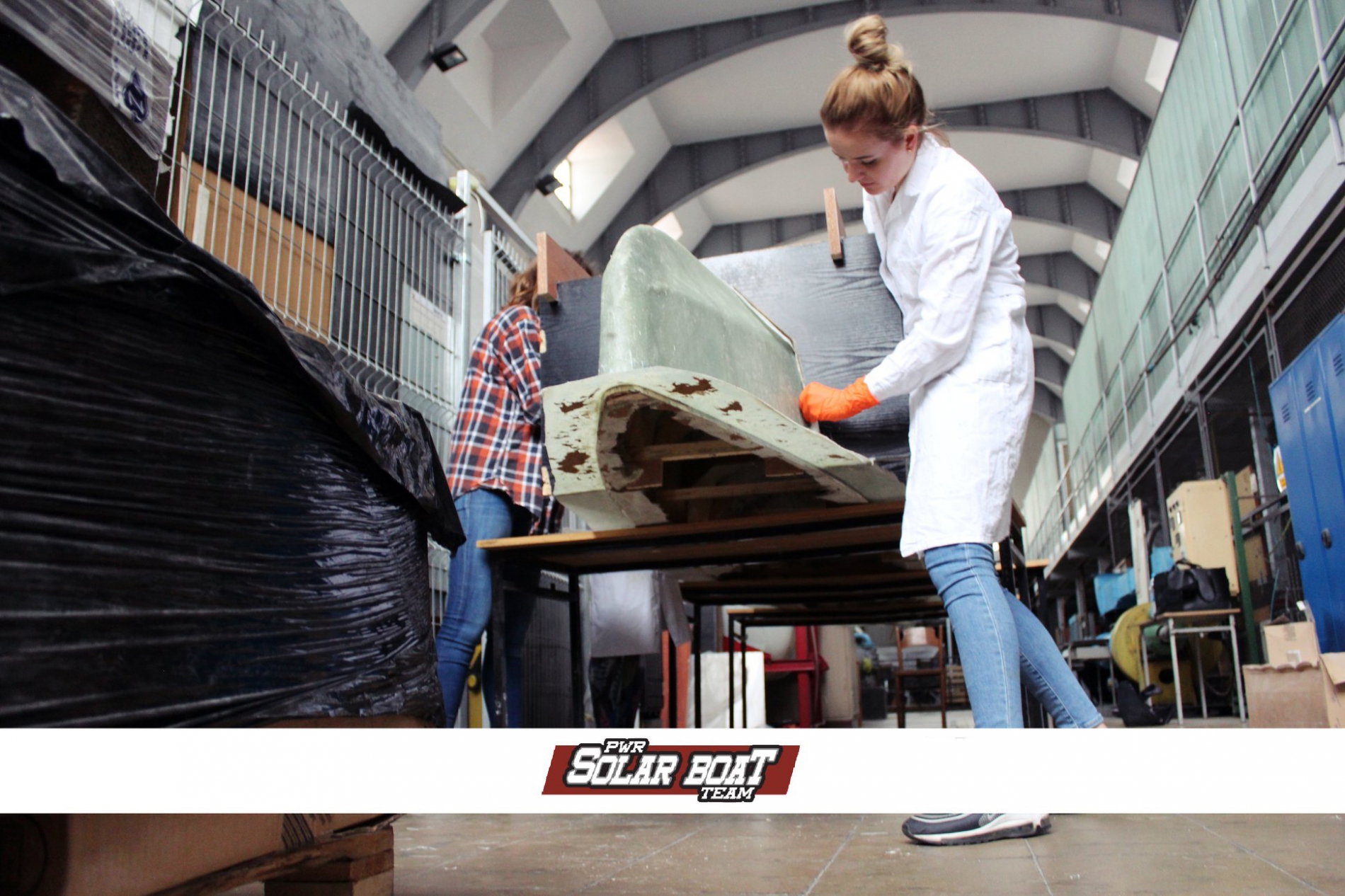YOUR BROWSER IS OUT-OF-DATE.
We have detected that you are using an outdated browser. Our service may not work properly for you. We recommend upgrading or switching to another browser.
Date: 04.04.2019 Category: general news, student activity
The construction works on our students’ solar boat enter a new stage. The composite mould which will be used to build the hull has been completed, and the first displacement tests on the river Odra are to begin soon
 The project involves the construction of a 5.5-metre one-man boat equipped with 6 square metres of photovoltaic panels. Among other features of the construction are hydro-wings, i.e. special load-bearing panels, which are mounted under the hull. When a certain speed is reached, they cause the hull to surface, resulting in a decrease in resistance and the boat’s higher speed. Such solutions are used in vehicles such as hydrofoil boats, and in the case of solar boats, they allow more efficient use of the engine and panels.
The project involves the construction of a 5.5-metre one-man boat equipped with 6 square metres of photovoltaic panels. Among other features of the construction are hydro-wings, i.e. special load-bearing panels, which are mounted under the hull. When a certain speed is reached, they cause the hull to surface, resulting in a decrease in resistance and the boat’s higher speed. Such solutions are used in vehicles such as hydrofoil boats, and in the case of solar boats, they allow more efficient use of the engine and panels.
- As far as construction issues go, we’re already at the final stage of preparation of the mould in which we will make composite hull. We have already tested the prototype mould on the river Odra to check its displacement, among other things. Initially, the project assumed that the boat’s hull would be made of carbon fibre, but in the end, it was decided that it would be made of glass fibre - says Wiktoria Lada, the main coordinator of the project.
This solution is much cheaper, and in addition, when comparing specific proportions, it turned out that the use of glass fibre would increase the entire construction’ strength. - Although the hull will be heavier, stability will increase. We estimate that the boat will be able to accelerate to about 40 km/h. Having said that, everything depends on the weather conditions - the wind, sun, and even salinity of the water - adds Adrian Banachowicz, one of the coordinators of the marketing section.
The students would like to finish their work on the hull, carrying wings, control, and hydrodynamic optimisation of parameters before Easter. As soon as the electronics components have been prepared, the first displacement tests on the water will start. However, among other things, they are still waiting for the delivery of the motor, which is to have a power of about 5 kW.
The competition in Monaco, which our students want to enter, is the world’s largest and most prestigious event of its kind. The participants are not only university teams but also professional groups of designers. The teams compete in three challenges - acceleration, slalom, and race.
For more information about WUST’s Solar Boat, please visit Facebook.
Our site uses cookies. By continuing to browse the site you agree to our use of cookies in accordance with current browser settings. You can change at any time.